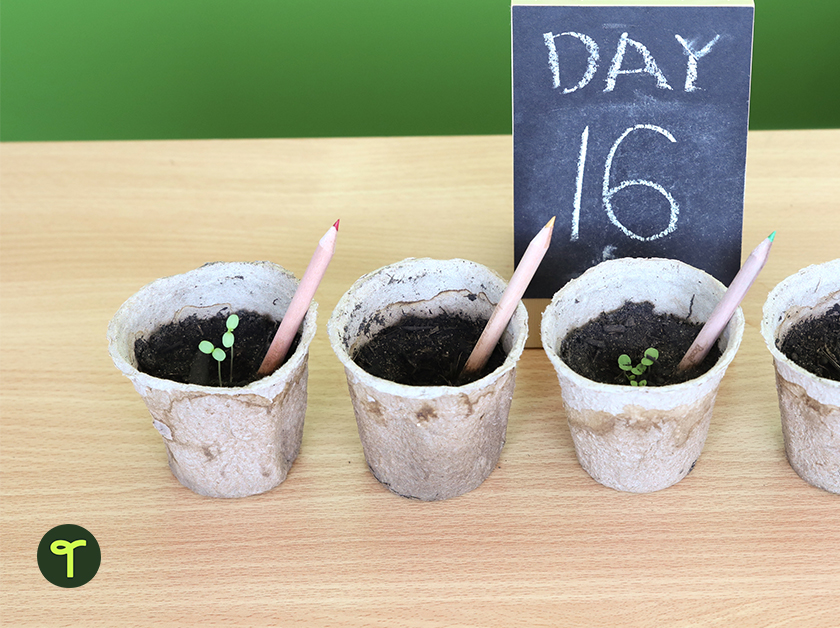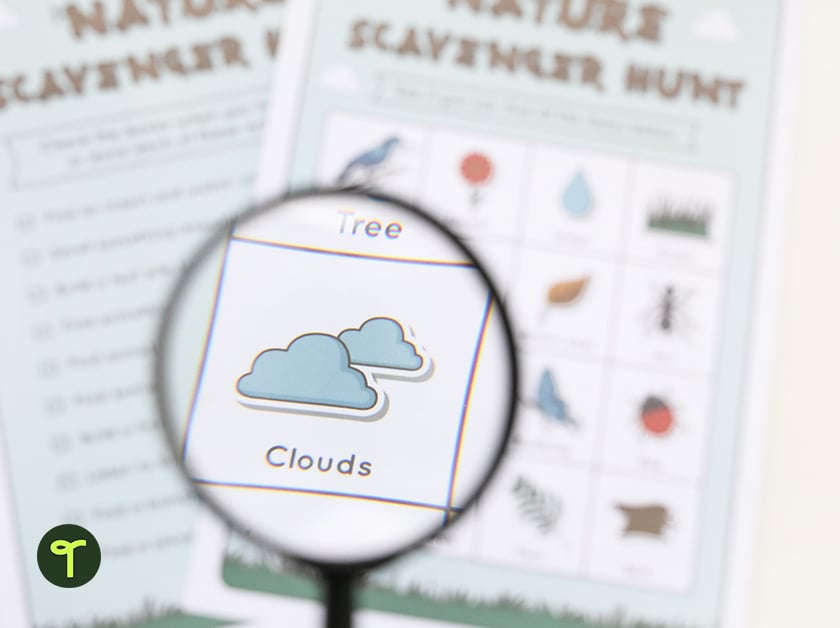The saying ‘children are our future’ is used so often that it can begin to sound cliched, but let’s face it: Truer words are rarely spoken. The students learning about nature, climate change, and sustainability in your classroom today will be the stewards of the environment in 10 or 20 years. The future of our planet will soon be in their hands. As a teacher, you’re making an important impact on our future too.
Sustainability — and helping teachers — are jointly entwined in our core mission, and we are here to lend a hand. The teachers who create all the printable worksheets, digital activities, and other teaching resources on the Teach Starter website have put together some of our favourite sustainability ideas to use with your students, plus ways to help the environment right in your classroom.
Whether you’re marking Earth Day or Clean Up Australia Day, writing sustainability lessons for your science class, or just looking for ways to stress the importance of being kind to Mother Earth in the classroom, read on for some must-save ideas to add to your teacher toolkit!
Sustainability Ideas for Teachers
1. Collect Pollinator Data
Studies have found that kids who feel ‘connected’ to nature act in more sustainable ways because of it. What better way to connect students to nature than by studying the pollinators that play such a vital role in the Australian ecosystem and doing a little citizen science? Taking part in the Wild Pollinator Count for a week in spring and autumn helps the wide world of science, draws on data and analysis skills, while helping students to make predictions and see real-world connections to the work they’re doing in maths class.
2. Plant … Anything
Let’s face it, one of the most obvious sustainability activities you can do with your students is one that’s pretty simple and tied directly to curriculum standards: Planting physical plants!
Whether you’re growing bean sprouts in snack bags with wet paper towels or setting up a full-fledged school garden, there are myriad benefits for students that come from incorporating the physical act of planting seeds into your lessons. In addition to the chance to connect with the environment and teach students about sustainable agriculture practices, studies show gardening with students helps improve their achievement in science classes, and kids involved in school gardening projects have been found to have an increased preference for fruits and veggies when it comes to snacking.
Print a plant growth chart to help students track their seedlings!
3. Determine Your Carbon Footprint
Students can use a carbon footprint calculator — this calculator from Carbon Positive Australia and this calculator from 8 Billion Trees are free, but each does require some pretty specific details parents would have to supply — to determine approximately how much carbon their lifestyle emits in a year. The calculators provide some small changes they could make in order to reduce their carbon footprint.
- Your class can record, collate and compare the numerical data that their quiz responses generate.
- Students can plot individual, small group or class data in a graph or table.
- Establish what the average carbon footprint is for your entire class, and set a goal to reduce it to a certain amount by the end of the school year. Have students examine the lifestyle changes suggested to them in their own results and identify which change they will embrace to help lower the class carbon footprint. This will help them see that even small changes they make on their own can have a big impact.
4. Write Found Object Short Stories
Students choose a found object or item to use as the inspiration for a short story in this environmental education activity. It may be something they collected during the nature walk, a food product examined in a lunchbox audit (see more below!) or a commercial item that they already own.
This creative writing exercise will put these items that might have gone unnoticed or been discarded in the focal point, encouraging students to think about them in an entirely different way.
5. Go on a Nature Scavenger Hunt
We know that children learn through play, and learning to be more sustainable and caring for the environment follows that same trend. Then add in the fact that spending time in nature can help children develop a connection to the environment, making them more aware of the beauty, diversity and interdependence of natural systems, and a nature scavenger hunt is a great way to get kids thinking more sustainably.
Connecting kids to nature can foster a sense of stewardship for the natural world, leading our students to think more carefully about how their actions impact the environment.
Print off a free nature scavenger hunt grid, and turn time outside into an adventure in connecting with the environment.
6. Tally Trips
Ask students to record their travels for a few days or a week, including trips to and from school, to the grocery store, or any other place they visit.
The type of data they capture for each trip may include:
- Mode of transport — did they walk? Ride a bus? Ride in a car?
- Approximate the distance of the trip
- Number of passengers
- Possible alternative modes of transport (could they have carpooled with other classmates?).
Students can then collate, examine and compare their own, small group and whole-class data. After presenting their findings in visual representations such as tables, column graphs or picture graphs, discuss what the results might mean in terms of knowledge of and attitudes toward sustainability.
7. Access the Wisdom of Local Community
Connecting with a local organisation is a fantastic way to find out more about the issues that are most relevant to your community. This also helps your students to gain even more of a real-world perspective on the sustainability topics you have been exploring in class.
- Send an email or Facebook message to an environmental organisation in your local area. Or, even better, pick up the phone and give them a call!
- Invite someone from the local community to come and speak to your class about the sustainability work that they do.
Check the Australian Philanthropic Services’ list of charities with a sustainability focus for ideas!
8. Make Your Own Classroom Paint
If you use paint in your classroom — or the art teacher down the hall does — try this project in your next science class. Use this recipe for turning old, tired felt pens into homemade watercolour paint to get the most out of your school supplies before you pop it in the TerraCycle box. You can wash and use old yoghurt containers and egg cartons for paint pots to make painting even more environmentally friendly.
9. Re-Purpose Paper
It can feel nearly impossible to have a sustainable classroom when things like worksheets and printouts are such an integral part of a teacher’s day-to-day life. You can get pretty close, however, by being smart about the amount of paper you use, and teach your students to be more environmentally conscious while you’re at it!
Here are some ideas about how to reduce your paper use:
- Make your students’ journals last longer by organising loose worksheets into folders.
- Make printable worksheets into booklets.
- Create a scrap paper drawer with paper students can reuse for projects, doodle paper, and more.
- Shred your paper for craft activities, such as papier mache, or donate it to your local animal shelter for animal bedding.
- Use Recycled Paper Bead Kits. Once you have enough, use the beads as counters, or create some beautiful visual art pieces! Or even use them in our Patterns Maths Investigation – Bands of Friendship.
Here at Teach Starter, we are committed to reducing our paper waste and helping the environment in whatever way we can — Teach Starter has pledged to plant one million trees by 2033 with our One Million Trees Project by planting a tree for every person who subscribes to Teach Starter. If you haven’t already, head on over to our subscription plans page, and help us out on this environmental initiative.
10. Visit the Local Recycling Center
Looking for a new field trip idea that won’t break the budget and has a real impact on your students’ futures? Check to see if your community has access to a recycling center that offers educational experiences. Even a visit to the local landfill could be an inexpensive and priceless excursion experience. Reverse Garbage is a Brisbane-based company that offer amazing sustainability education workshops, incursions and excursions to teach your students all about the benefits of creating craft from waste.
Download dozens of sustainability activities for the classroom, developed by teachers and curated by the Teach Starter team!
Banner image via shutterstock/Dmytro Zinkevych









Do I need to pay for the subscription only then I can access to any activity
Hi Kiran, There is a mix of free and premium resources featured in this blog post. You can visit each resource's page to download those that are free or purchase specific premium resources. You can also subscribe to gain access to all of Teach Starter's resources. If we can help with anything else, please don't hesitate to get in touch!